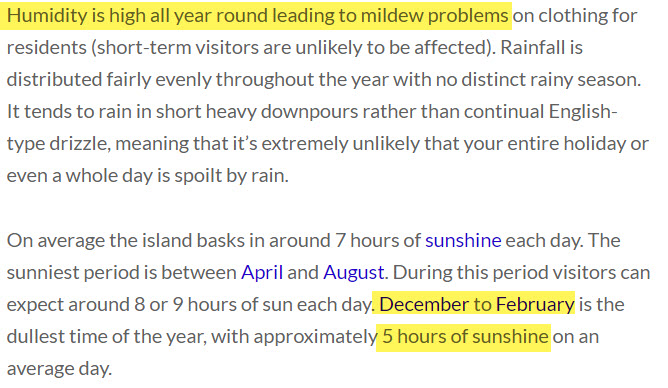What are you breathing?
That question requires a bit more explanation.
It also needs to be couched in a setting of some individuals with runny noses, and others with clogged Eustacian tubes contributing to hearing loss.
One can readily imagine the respiratory pleasures of being on an island.
Gentle breezes have been traveling thousands of miles over the ocean.
These movements of air have been picking up a level of humidity that is perfect for our pulmonary system.
In addition to the right relative humidity, these gentle breezes carry useful amounts of salts, as well as negative ions.
Let's set aside for the moment further discussion on negative ions.
But on the island of Bermuda today, is that ideal though invisible mix, what a person is breathing during most of the hours awake and asleep?
The time asleep is particularly important at this season of the year, since with less light in this hemisphere, humans tend to display a pseudo-hibernation and sleep a few more hours than usual. This clearly relates to levels of secretion of melatonin by the pineal gland, and seasonal variation in these levels.
Let's set aside for the moment further discussion on the pineal gland.
Coming back to our question, what are you breathing?
Are you breathing the gentle, health sustaining breezes just described?
Or, is what is entering the respiratory tract with each breath, a quite different air?
Here is a simple question.
Who is controlling, and using what system, the air you breathe?
This becomes much more important when one considers the number of hours of relatively passive breathing while sleeping.
What is the relative humidity of this inspired air? What should it be?
Here is a link that addresses that, and from which I quote:
“The best relative humidity for sleeping and other indoor activities has been debated. According to the Environmental Protection Agency, the best indoor relative humidity falls between 30% and 50%, and it should never exceed 60%. Other studies suggest 40% to 60% is a better range. Regardless, 60% seems to be the agreed-upon threshold for indoor humidity.
Conversely, exposure to excessively low humidity levels can cause health problems such as dry skin, itchy eyes, and a sore throat. Low humidity has also been linked to respiratory infection.”
So, how would one know?
By measuring the relative humidity near where one is sleeping or spending the majority of one’s hours.
Here is a nice choice that is readily available.
On December 29, what does the weather report for the island of Bermuda instruct?
This leads to the assumption that the heat is now on where you are staying.
Suddenly the current environmental conditions on Bermuda may contribute to a less than ideal setting for problem-free health.
Is the heat on?
Is it baseboard heat?
Radiators that need a good brushing out?
In spite of Bermuda’s typical 88% relative humidity throughout the year (which is quite high and favors mold formation), has implementation of a central heating system in fact reduced relative humidity levels far below that? Especially during hours of sleep?
Making measurements always reduces the amount of uncertainty and unknown in any such question.
So, ... is mold an issue here?
How would you know?
Even if no visible (dark spots in shower or ceiling corners, or behind panels) mold is present, it can still be floating around in the air one is breathing. It can contribute to reactions that are essentially allergic.
Here is a kit that can be used to measure for mold in the air one breathes.
Hope this contributes to clearing the air and putting an end to runny noses and plugged ears.
At least its not roaches.


